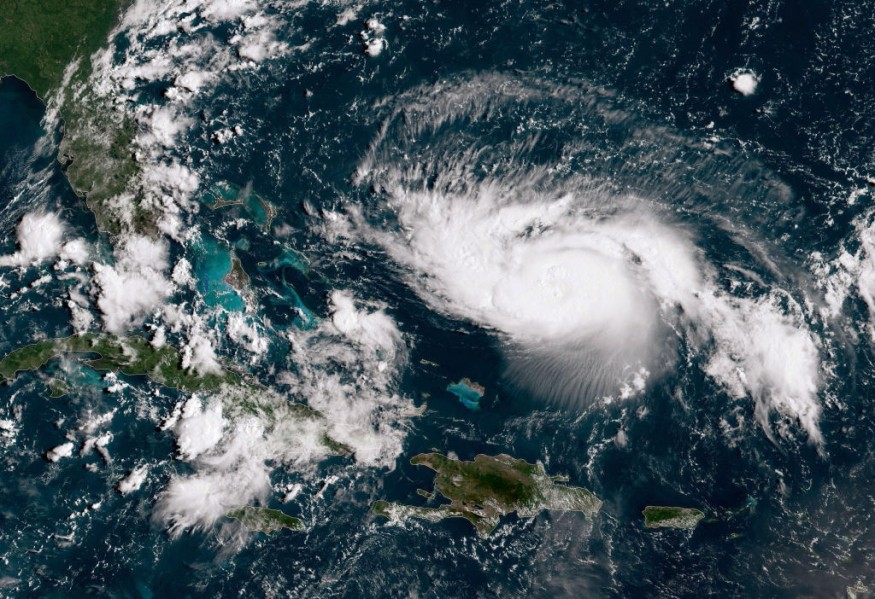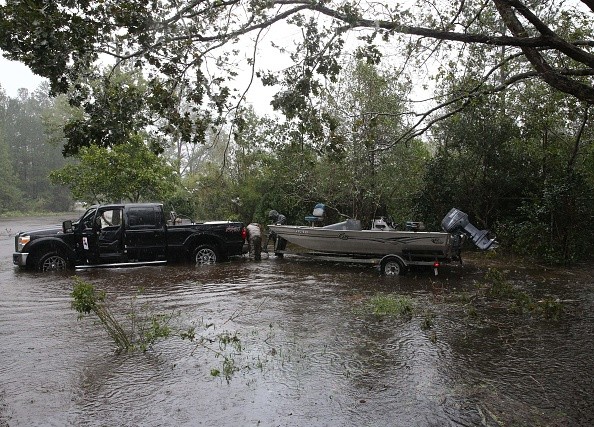August marks the start of the Atlantic hurricane season's peak. Although the Atlantic hurricane season has been dormant for about a month, the peak of the season is soon to arrive, so don't anticipate it to stay that way for very long.

A Series of Extreme Weather
Tropical Storm Colin was the final cyclone to traverse the Atlantic Basin, which briefly struck the coastal Carolinas on July 2 and 3 with torrential rain and strong gusts.
However, a slowdown in activity in the tropics in June or July before the season picks up in August is not unusual.
The National Hurricane Center reports that, on average, the Atlantic experiences one named storm in June and one to two named storms in July.
However, as we go towards August, there is still around 90% of a typical Atlantic hurricane season left, as seen in the graph below.
In an average year, the months of August through early October tend to generate the most hurricanes and tropical storms. The Atlantic hurricane season's busiest month is September, with the official monthly peak being September 10.
As a result, the Atlantic Basin experiences its strongest, most destructive storms around this time.
Four storms hit the United States in August, five in September, and four in October alone in the past five years (2017 through 2021). That includes Storm Ida from the previous year, which struck as a Category 4 hurricane on August 29 and wreaked havoc in sections of southern Louisiana.
The storm's effects extended beyond the northern Gulf Coast and Louisiana's shoreline, unleashing a devastating 14-foot storm surge and copious rains. Along the Eastern Seaboard, where tornadoes and floods were recorded as far north as New England, the storm's effects were also felt.
More than 100 people were said to have died due to Hurricane Ida, which also caused $75 billion in damages from the Caribbean to New England. Just behind Katrina, Harvey, Maria, and Sandy, the storm's devastation was enough to make it the fifth most expensive hurricane in US history.
In April 2022, the World Meteorological Organization decided to stop using the word "Ida" about the Atlantic Basin.
Also Read : A Series of Intense Storm to Hit the Midwest
Hurricane Season

Beginning in August, the tropics become significantly more active than in June and July due to the virtually complete opening of the Atlantic Basin to tropical growth.
Early in the season, the so-called Main Development Region between Africa and the Lesser Antilles is typically not favorable for storms due to a frequent influx of Saharan dust and dry air into the region. However, as the dusty, dry air becomes less persistent, the region becomes more favorable for development.
By August, tropical waves are also more common in western Africa. If the conditions are right, they can serve as seeds for tropical development in the Main Development Region during the height of hurricane season.
When a tropical wave in the Main Development Region produces a tropical storm or hurricane, it frequently travels westward across the tropical Atlantic Ocean toward the Lesser Antilles. Some of these storms travel 3,500 miles from the eastern tropical Atlantic Ocean to the Caribbean islands or the US coast, while others make a harmless turn to the northwest toward Bermuda or the open ocean.
Cabo Verde storms are named after the island country a few hundred miles to the west of mainland Africa and describe hurricanes that form in this region to the west of Africa. In September, hurricanes frequently hit Cabo Verde.
Because the Gulf's water temperatures are among the highest of the year and provide tropical cyclones more energy to grow and intensify, it is another hotspot where tropical storms and hurricanes form at the height of the season.
Recorded Data
Fourteen to twenty named storms, six to ten hurricanes, and three to six significant hurricanes are expected this season, not counting the three storms that have already developed (Category 3 or higher on the Saffir-Simpson Hurricane Wind Scale).
According to the most recent forecast from Colorado State University, a total of 20 named storms will develop this season. Ten hurricanes are included in that total, five expected to reach Category 3 strength or higher.
These figures exceed the 30-year averages (1991-2020) of 14 named storms, seven hurricanes, and three major hurricanes.
This will be the eighth straight Atlantic hurricane season above normal if the forecasts come true.
Since Alex, Bonnie, and Colin have already developed, Danielle will be the name given to the following system to at least become a tropical storm.
Related Article : Exposure to Major Disasters Can Cause Long-Term Mental Health Problems
For more climate and weather updates, don't forget to follow Nature World News!
© 2026 NatureWorldNews.com All rights reserved. Do not reproduce without permission.





